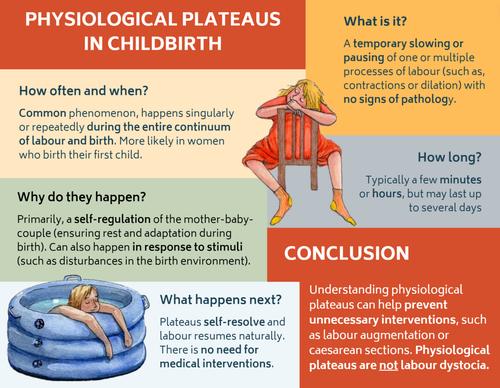Physiological plateaus during normal labor and birth: A novel definition
Abstract
Background
Diagnoses of labor dystocia, and subsequent labor augmentation, make one of the biggest contributions to childbirth medicalization, which remains a key challenge in contemporary maternity care. However, labor dystocia is poorly defined, and the antithetical concept of physiological plateaus remains insufficiently explored.
Aim
To generate a definition of physiological plateaus as a basis for further research.
Methods
This qualitative study applied grounded theory methods and comprised interviews with 20 midwives across Australia, conducted between September 2020 and February 2022. Data were coded in a three-phase approach, starting with inductive line-by-line coding, which generated themes and subthemes, and finally, through axial coding.
Results
Physiological plateaus represent a temporary slowing of one or multiple labor processes and appear to be common during childbirth. They are reported throughout the entire continuum of labor, typically lasting between a few minutes to several hours. Their etiology/function appears to be a self-regulatory mechanism of the mother-infant dyad. Physiological plateaus typically self-resolve and are followed by a self-resumption of labor. Women with physiological plateaus during labor appear to experience positive birth outcomes.
Discussion
Despite appearing to be common, physiological plateaus are insufficiently recognized in contemporary childbirth discourse. Consequently, there seems to be a significant risk of misinterpretation of physiological plateaus as labor dystocia. While findings are limited by the qualitative design and require validation through further quantitative research, the proposed novel definition provides an important starting point for further investigation.
Conclusion
A better understanding of physiological plateaus holds the potential for a de-medicalization of childbirth through preventing unjustified labor augmentation.



 求助内容:
求助内容: 应助结果提醒方式:
应助结果提醒方式:


